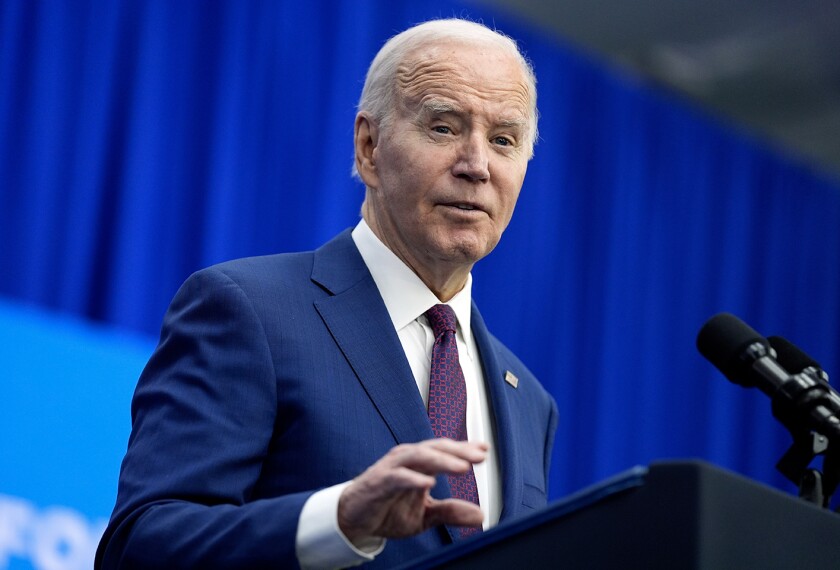Denise Ray knows that she ought to start packing up her 4th grade classroom at Dr. Lydia T. Wright School of Excellence in Buffalo, N.Y. Still, somehow, she can’t bring herself to do it.
A first-year teacher in the 47,000-student district, Ms. Ray is one of more than 430 Buffalo teachers slated to be laid off this month or next as district leaders struggle to close a $28 million hole in a $509 million budget for this fiscal year.
Just over three months ago, Ms. Ray, 25, spent a week setting up her new classroom, taking care to make it a special place for her students, many of whom come from economically or socially disadvantaged backgrounds. Now, she said last week, she looks at her handiwork—including a classroom library and a math center—and can’t bear the thought that it will go to waste.
“I’m so disappointed,” Ms. Ray said. “I have a wonderful classroom. It’s so hard to go in there every day and teach them and not fall apart.”
If her layoff proceeds as scheduled, her last day will be Dec. 21. Her students, as with scores of others across the district, will be absorbed into other classrooms.
While the teachers slated to be affected by the cuts work to make peace with their pink slips—preparing their students for good-byes, or talking with recruiters from other districts—school officials and Buffalo citizens aren’t swallowing the staff layoffs and cuts in programs without a fight.
Students and parents have protested in recent weeks by rallying outside City Hall and flooding New York state lawmakers with requests for more aid.
Philip Rumore, the president of the 4,000-member Buffalo Teachers Federation, is exploring the idea of putting on a benefit concert using musicians who are natives of Buffalo, and broadcasting it as a telethon.
“If we can save 10 teachers’ jobs,” said Mr. Rumore, whose union is the local affiliate of the National Education Association, “we’ll do it.”
‘Minute by Minute’
Last week, the Buffalo school board discussed a plan to save $750,000 by expediting the closing of four schools, said Paul G. Buchanan, the board’s president.
Of the 430 teaching positions targeted for cuts, the district has already eliminated about 150 slots by not filling vacancies and by implementing a first wave of layoffs earlier this month. Another 50 layoffs at secondary schools appear likely in January, Mr. Buchanan said. That leaves 230 teaching posts that district officials are scrambling to save through various cost-cutting measures, including closing schools.
“Whatever savings we can generate are going into saving these teaching positions,” Mr. Buchanan said. The board is scheduled to meet again on Dec. 19, and will then determine how to proceed with a second wave of 150 layoffs slated for Dec. 21.
District Superintendent Marion Cañedo, meanwhile, is working the phones, calling administrators of various federal and state grant programs to get permission to take money earmarked for nonsalary educational enhancements, such as staff development, and use it to keep more teachers in the classroom. The district even bought some time recently, asking teachers originally slated to be laid off Dec. 10 to stay on until Dec. 21 while district leaders worked to save jobs.
“That’s where we are, working minute by minute, day by day,” Ms. Cañedo said. “We have a meeting every day to see where we are and who we’ve saved.”
Reversal of Fortune
Despite the efforts, school officials can’t help but reflect on how quickly fortunes have turned.
Early this year, district leaders were looking toward a brighter future as they began sweeping academic and organizational changes in an effort to become better equipped to meet state standards. And recent news on student achievement was encouraging: Five Buffalo schools were included on the state’s list of “most improved” schools, released last month, based on gains on the English and math portions of state tests.
The challenge during a budget crisis is “how do we continue to provide small class sizes, a focus on reading, and extra support in math, social studies and English,” Mr. Buchanan said. “We thought we had it figured out until September 11 happened, and the state went from debating a budget surplus to a budget deficit.”
Like other districts in New York, Buffalo had counted on the state legislature to provide the aid it needed to avoid a budget crunch as the economy soured.
But the legislature passed a bare-bones budget in August that came up short—way short. Lawmakers promised districts they would return the following month to approve a supplemental spending plan. But they failed to do so before the Sept. 11 attack in New York City dealt a devastating blow to the state’s fiscal fortunes and priorities. (“Buffalo Schools to Lay Off Nearly 500 Workers,” Oct. 31, 2001.)
Rep. Arthur O. Eve, a Democrat and the deputy speaker of the state Assembly, noted that while the state’s fiscal troubles are hurting districts throughout New York, the impact on Buffalo is the most pronounced. The district has a limited local tax base and receives some 80 percent of its funding from the state.
For now, Ms. Cañedo says the district is most focused on limiting class-size growth as much as possible in the wake of the layoffs—a goal that has meant unraveling some of the changes the district recently implemented.
Last summer, several dozen Buffalo teachers trained to become out-of-classroom resource teachers charged with improving their colleagues’ reading and mathematics teaching skills. Less than halfway into their first year the teachers are being reassigned to classroom duty.
“It’s so discouraging,” Ms. Cañedo said. “The community and all of us were so excited about the changes we’ve made. People were feeling really good about what we were doing in the schools.”
Holding a Pink Slip
Likewise, Ms. Cañedo continued, it’s been painful to field calls from teacher recruiters from other districts who have heard about Buffalo’s misfortunes. After working hard to attract teachers, she said, “we’d like to keep them here. They’re wonderful.”
Robin Fischer, a first-year teacher who teaches 6th grade at the Grabiarz School of Excellence, would like to stay in Buffalo, too. After spending eight years working for an insurance company on the outskirts of New York City, Ms. Fischer returned to her hometown, earned a degree in education at a local university, and won a job with the city school system.
If her first three months in the classroom have taught her anything, she said, it’s that she’s happy to be a teacher. That makes it even harder to be holding a layoff notice, knowing that her last day may be Dec. 21. But while she worries about losing her job, she says she is more concerned for her students.
“How many more kids can you put in a classroom and say it’s OK?” Ms. Fischer asked. “They shouldn’t have to come to school in the middle of the year and find out they have 10 more kids in their class and a new teacher. Everybody needs to have some stability.”




